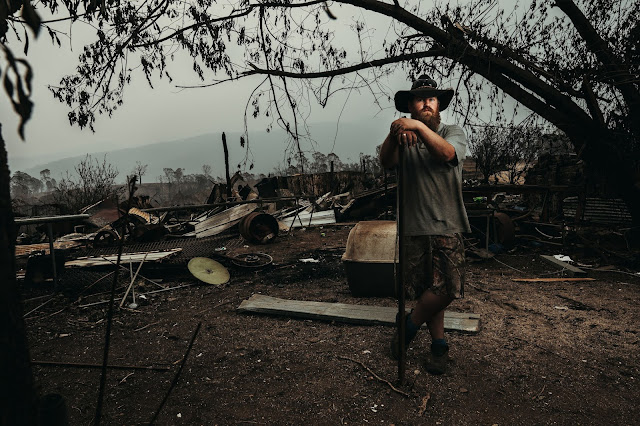Living Memory - NPPP 2021 | Various artists
National Portrait Gallery | Until 16 January 2022
Group exhibitions can be awkward to review because of the diversity of imagery subject matter and quality. This exhibition has a specified theme but, like all themes, it was open to wide interpretation and, unsurprisingly, the images in it approach portraiture in differing ways. Overall, the quality of the prints is high as we would hope in such a show, although I was disappointed with a small number.
So,
what is on display in this, the 15th annual National Photographic
Portrait Prize (NPPP)? With its Living Memory theme having been set to acknowledge
the seismic events of 2020, it was hoped entries would offer a powerful and
historic visual record of the year that was and would capture the unique ways
in which we as individuals, and as a nation, responded to it. Many of the
images on display certainly show both the photographers and their subjects
responding to the dramas of 2020. Others, though, do not – in my view. Nevertheless,
the diversity and quality of the artwork combines in a powerful visual
exhibition.
In shows such as this I always look for works by locals and other people whom I know personally, and images by artists whose work I have long admired. This year I found a familiar work by local Marzena Wasikowska – A Covid kind of day, from her series Negotiating the Family Portrait 2011-2021. I wrote about that series here earlier this year, noting that this is the fifth time an image from the series has been a NPPP finalist.
I also found two images by Canberra Times photographer Dion Georgopoulos, both taken after the firestorms and previously seen published in this newspaper. I consider Wandella Firestorm, 2020 to be the more powerful of the two but The Salway Family is also a fine portrait with a father and nephew placed before a devastating background.
 |
Wandella Firestorm © Dion Georgopoulos |
 |
The Salway Family © Dion Georgopoulos |
One of the represented photographers whose work I always appreciate is Tamara Dean. The Goodall Boys, 2021 came from Dean finding beauty in her immediate environment and being inspired to create photographs of the people and places she was surrounded by when unable to venture further afield. That is an experience most artists shared in 2020.
The Goodall Boys © Tamara Dean
Two of the most powerful images displayed are side by side
and both feature emotionally charged situations. When Rachel Mounsey
photographed Max, 2020 her subject said ‘All has been erased. Nature has
to come back through a black, blank canvas. It's a lamentable game of survival,
but beautiful to watch.' The resultant image successfully conveys that. Alongside
it is Matthew Newton’s Anna, 2020 showing peaceful activist Anna Brozek
standing determined, tall and proud on the remains of a logged tree in Tasmania's
precious old growth forests. Her message could not be clearer.
But what of the winner and other awarded images? I have
read considerable commentary elsewhere about the winner – a familiar scene (of
a farmer walking towards a dust storm), hard to understand why certain photos
win these types of Prizes, what does it reveal about the person? Whether or not
those are valid comments, there is no denying the emotion the winning work and
other awarded images convey.
There are numerous works in this diverse exhibition that we all need to study and explore, especially the few type C prints such as Kalyanii Holden’s beautiful The Cat’s Out Of The Bag.
The Cats Out Of The Bag © Kalyanii Holden
I
could not look at one work as it had been covered. The person depicted has
recently passed away. I applaud the Gallery for respecting Indigenous cultural
protocols while the person’s family and community are consulted regarding their
wishes.
This review was published on 6/11/21 by the Canberra Times here. It is also on the author's personal blog here.



